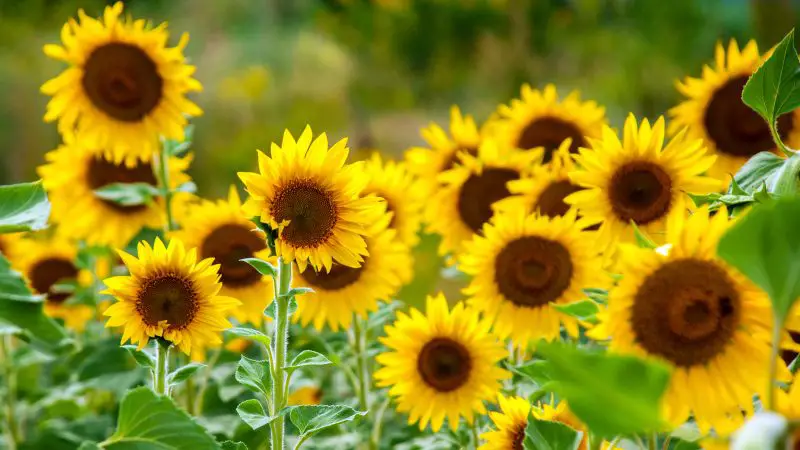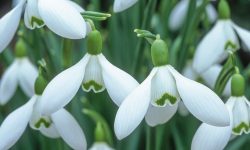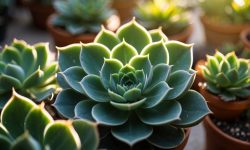Sunflowers are symbols of warmth, happiness, and optimism. Their golden petals and towering stems make them a favorite for gardens, bouquets, and decorative arrangements. Many gardeners and flower lovers often wonder how long these cheerful blooms last and what can be done to enjoy their beauty for as long as possible. Understanding their lifespan helps you plan planting schedules, harvest times, and floral arrangements effectively.
The longevity of a sunflower depends on several factors, including the variety, growing conditions, and aftercare. Whether in the garden or a vase, the right techniques can help extend their vibrancy. In this guide, we will explore every stage of the sunflower’s life, from seed to bloom, and provide expert tips to maximize their beauty. By following these insights, you can enjoy your sunflowers for weeks instead of days and preserve their charm both indoors and outdoors.
Understanding Sunflower Lifespan

Sunflowers are annual plants, meaning they complete their life cycle in one season. From seed germination to mature blooms, the entire process usually takes between 70 and 100 days. The blooming phase, when petals are at their brightest, often lasts only two to three weeks. This short period is when sunflowers display their full charm and vibrant colors.
The lifespan of a sunflower depends on several factors. These include the variety, planting time, and climate conditions. Sunflowers grown in ideal conditions can maintain healthy blooms for longer. In contrast, plants exposed to pests, diseases, or poor soil quality may fade faster. Gardeners can influence lifespan by providing proper care and timely maintenance.
Understanding this growth cycle helps with planning and harvesting. If you want continuous color in the garden, you can stagger planting times. This ensures fresh blooms appear as others fade. By knowing the stages of growth, you can take steps to protect the plant’s health and extend its beauty.
Sunflower Growth Stages and Longevity
Germination Stage
Sunflower seeds typically germinate within seven to ten days under ideal conditions. Warm soil and consistent moisture are essential. Seeds require light, well-draining soil to sprout strong roots. Avoid overwatering, which can lead to rot, or under-watering, which slows growth.
During germination, soil temperature should remain between 21–25°C for optimal sprouting. Providing gentle protection from pests and sudden temperature shifts ensures higher survival rates. Healthy seedlings establish a solid foundation for later bloom stages. Observing the early growth helps gardeners anticipate potential issues and adjust care practices promptly.
Vegetative Growth Stage
Once seedlings emerge, vegetative growth begins, characterized by rapid leaf and stem development. Plants require full sunlight, regular watering, and nutrient-rich soil to thrive. Strong stems support future blooms, while large, healthy leaves provide energy through photosynthesis.
Regular observation of plant spacing and soil condition is important. Overcrowding reduces airflow, increasing disease risk. Applying balanced fertilizer during this phase promotes robust growth and prepares plants for bud formation. Proper vegetative care directly influences flower size and longevity.
Bud Formation Stage
During bud formation, sunflower plants shift energy to developing flower heads. Timely watering and nutrient support are crucial. Stress at this stage can result in smaller blooms or delayed opening. Mulching and staking can protect developing buds from environmental damage.
Bud formation is sensitive to temperature and sunlight. Cooler nights or cloudy days may slow growth, while extreme heat can cause buds to abort. Gardeners should monitor pests, provide consistent hydration, and ensure optimal sunlight. Successful bud development lays the foundation for long-lasting, vibrant blooms.
Blooming Stage
Peak bloom occurs when petals fully open, displaying maximum color. This stage typically lasts two to three weeks, depending on variety and care. Adequate water, sunlight, and protection from wind or pests prolong flower life.
Regular deadheading of faded blooms encourages new flower production. Supporting tall varieties with stakes prevents stem breakage. By maintaining ideal conditions, gardeners can maximize bloom duration. Observing flowers closely helps identify stress signs early, ensuring continued vibrancy throughout the season.
Seed Maturation Stage
After blooming, sunflower heads shift energy to seed production. Petals may fade, but proper care maintains overall plant health. Seeds become fully developed and can be harvested for food or future planting.
Monitoring water and nutrient levels during seed maturation is critical. Overlooking this phase may reduce seed quality or shorten plant life. Sunflowers in optimal conditions can complete their full life cycle, producing both striking blooms and healthy seeds. Understanding each growth stage helps gardeners maximize longevity and aesthetic impact.
Factors Affecting Sunflower Longevity
Soil Quality and Nutrition
Soil quality directly influences sunflower growth and bloom duration. Nutrient-rich, well-draining soil supports strong roots and vibrant petals. Poor soil can stunt growth, weaken stems, and shorten bloom life. Gardeners should enrich soil with compost or balanced fertilizer before planting.
Proper nutrition helps flowers maintain color and structural integrity. Essential minerals like nitrogen, phosphorus, and potassium support healthy leaves, stems, and seeds. Regularly monitoring soil pH and nutrient levels ensures plants receive what they need. Consistent care prolongs blooms and improves overall plant resilience.
Watering Practices
Sunflowers require consistent moisture, especially during hot or dry periods. Overwatering can cause root rot, while underwatering stresses plants and leads to wilting. Maintaining balanced watering ensures optimal hydration and healthy blooms.
Mulching helps retain soil moisture, regulate temperature, and reduce evaporation. Checking soil regularly prevents both over- and under-watering. Adequate water supports longer bloom duration, stronger stems, and overall plant vitality. Proper watering directly contributes to sunflower longevity and beauty.
Sunlight and Environmental Conditions
Sunflowers thrive in full sun, needing at least six to eight hours daily. Insufficient light weakens stems and reduces flower size, shortening bloom life. Temperature extremes, heavy rain, and strong winds also impact longevity.
Proper placement ensures sun exposure and airflow for healthy growth. Staking tall varieties protects stems from wind damage. Adjusting care to seasonal changes, including shading during heatwaves or protecting from frost, prolongs blooms. Understanding environmental factors helps gardeners maximize sunflower lifespan.
Climate and Seasonal Impacts
Temperature and Sunlight Effects
Sunflowers thrive in warm climates with full sunlight. They require at least six to eight hours of direct light daily. Cooler temperatures slow growth and delay blooming, while excessive heat may cause wilting or bud drop. Consistent sunlight ensures photosynthesis supports strong stems and vibrant petals.
Seasonal temperature fluctuations also affect bloom duration. Spring-planted sunflowers may face late frosts, while summer heat waves can stress plants. Gardeners should monitor daily temperatures and provide shade or temporary protection when necessary. Maintaining optimal temperature and sunlight conditions maximizes flower longevity and seed development.
Rainfall and Humidity Impacts
Rainfall and humidity influence sunflower health and bloom life. Excessive rain can waterlog soil, leading to root rot, while prolonged drought stresses plants and reduces flower size. High humidity increases fungal disease risks, shortening bloom duration.
Proper watering, mulching, and soil drainage help manage these seasonal effects. Monitoring weather forecasts allows gardeners to adjust care, such as adding stakes during storms or extra irrigation during dry spells. By understanding rainfall and humidity impacts, gardeners can maintain healthier plants, ensuring vibrant and long-lasting blooms throughout the season.
Garden-Grown Sunflowers: How Long They Last
Sunflowers grown directly in the garden typically last longer than cut flowers. Their roots remain in nutrient-rich soil, supporting continued growth. A well-established sunflower can produce blooms for two to three weeks at peak color. After this period, petals gradually wilt, and seeds start to develop in the flower center.
The variety of sunflower also influences garden longevity. Tall, sturdy types often maintain blooms longer, while dwarf varieties may fade more quickly. Soil fertility and proper watering further extend the life of garden-grown plants. Sunflowers thrive in full sun with adequate spacing to reduce competition for nutrients. Overcrowded plants may produce smaller blooms that fade faster.
Staking tall sunflowers is essential to prevent bending or breaking from wind. Regular deadheading of spent flowers can encourage new blooms and extend flowering time. Additionally, monitoring for pests and disease ensures healthier plants and longer-lasting beauty. By following these simple care tips, gardeners can enjoy bright, vibrant sunflowers in the garden for a full month or more, maximizing the seasonal display.
Optimal Fertilization Techniques
Proper fertilization is essential for sunflowers to maintain vibrant blooms and long-lasting growth. Balanced fertilizers provide nitrogen, phosphorus, and potassium, supporting strong stems, healthy leaves, and large flower heads. Over-fertilizing, especially with nitrogen, can promote excessive foliage at the expense of flowers. Gardeners should use soil tests to determine nutrient needs and apply fertilizers accordingly.
Timing also affects bloom quality. Fertilizing during vegetative growth encourages robust stems and leaf development. Additional feeding at the bud formation stage ensures flowers develop fully and retain color longer. Slow-release or organic fertilizers can maintain consistent nutrient availability without overwhelming the plant.
For container-grown sunflowers, frequent but moderate feeding is necessary, as nutrients leach out quickly during watering. Liquid fertilizers can provide an immediate boost, particularly during heat or drought stress. Combining proper fertilization with adequate sunlight and water ensures flowers remain healthy, strong, and long-lasting. Careful attention to feeding schedules directly contributes to extended bloom duration and overall plant vitality.
Cut Sunflowers in Vases: Extending Freshness
Cut sunflowers have a shorter lifespan than garden-grown plants. They typically last five to twelve days in a vase. The exact duration depends on the sunflower variety, freshness at harvest, and care after cutting. Using clean, sharp scissors ensures minimal damage and helps flowers last longer.
Proper water management is crucial for vase longevity. Change the water every two days and remove any leaves submerged in water. This prevents bacterial growth that can quickly wilt blooms. Adding flower preservatives or a small amount of sugar and vinegar can also extend freshness. Keeping the vase away from direct sunlight and drafts helps maintain vibrant petals.
Trimming stems at an angle increases water absorption, keeping sunflowers hydrated. Recut stems every few days to improve uptake and prolong blooms. Placing flowers in a cooler area at night slows respiration and delays wilting. By following these simple steps, cut sunflowers can remain fresh and bright longer, making them ideal for decorative arrangements and indoor displays.
Sunflower Varieties and Their Bloom Duration
Tall Varieties
Tall sunflower varieties, such as ‘Mammoth’ and ‘Titan,’ are known for their impressive size and long-lasting blooms. These plants can reach heights of eight to twelve feet, producing large, vibrant yellow flowers. Their sturdy stems help support the petals and seeds, reducing the likelihood of bending or breaking during windy conditions. Gardeners often choose tall types when they want a bold statement or a focal point in the garden.
The blooming period for tall sunflowers typically lasts two to three weeks at peak color. Proper care, including consistent watering, nutrient-rich soil, and adequate sunlight, helps extend the bloom life. Staking the plants can prevent damage and encourage upright growth. These tall varieties are also ideal for cut flowers, as their blooms maintain freshness longer than smaller types. By selecting the right variety and providing attentive care, gardeners can enjoy prolonged beauty in their landscapes.
Dwarf and Decorative Varieties
Dwarf and decorative sunflower varieties are smaller in size, often growing between one and three feet tall. They produce multiple heads per plant, creating a colorful, textured display in garden beds or containers. Their petite blooms add charm to borders and patio gardens, offering visual variety alongside larger sunflowers. Because of their smaller stature, they require less space, making them perfect for compact gardens.
However, these varieties generally have a shorter bloom period, lasting one to two weeks at peak condition. They are more sensitive to environmental stress such as extreme heat, wind, or insufficient water. Staggered planting can help maintain a continuous display of blooms throughout the season. Regular deadheading and proper feeding also support healthier, longer-lasting flowers. By understanding their specific needs, gardeners can maximize the visual impact of these decorative types.
Specialty and Hybrid Varieties
Specialty sunflowers, including colored, striped, or unusual petal shapes, offer unique aesthetic appeal in gardens and floral arrangements. Many hybrid varieties are specifically bred for extended bloom life, retaining vibrant petals longer than standard types. These varieties can range in height and bloom size, giving gardeners flexibility to create layered or mixed displays with continuous color.
Hybrids often require careful maintenance, including regular watering, pest management, and proper soil nutrition. Understanding each variety’s characteristics allows gardeners to plan planting schedules effectively. By selecting the right specialty or hybrid sunflower, you can enjoy a longer-lasting, visually striking garden display. Combining hybrids with tall and dwarf types ensures that blooms are staggered, maintaining continuous color throughout the growing season.
Best Practices for Prolonging Blooms in the Garden
Maintaining healthy sunflowers requires attention to soil, water, and sunlight. Nutrient-rich, well-draining soil encourages strong root systems, which support longer-lasting blooms. Regular watering is essential, especially during hot or dry periods. Consistent moisture helps flowers stay vibrant and prevents premature wilting. Mulching around the base reduces evaporation, controls weeds, and maintains even soil temperature.
Deadheading spent blooms is another effective practice. Removing faded flowers encourages the plant to produce new blossoms and extends the overall flowering period. Fertilizing with a balanced, slow-release nutrient mix provides essential minerals that support continued growth. Gardeners should also monitor for pests and diseases, as infestations can weaken plants and shorten bloom lifespan.
Proper spacing ensures adequate air circulation and sunlight exposure, reducing stress on individual plants. Staking tall varieties prevents bending or breaking under wind or rain. Planting sunflowers in staggered intervals can maintain continuous color across the garden. By following these practices, gardeners can enjoy vibrant, long-lasting sunflowers that enhance outdoor spaces for weeks longer than typical blooms.
Seasonal Considerations for Sunflower Health
Sunflower growth and bloom longevity are strongly influenced by seasonal conditions. In spring, planting should occur after the last frost to ensure seeds germinate successfully. Soil temperature and sunlight availability are critical during this period, as young seedlings are highly sensitive. Early care includes consistent watering and protection from pests that emerge in spring, helping establish strong, healthy plants for the summer bloom.
During summer, sunflowers require full sun exposure, at least six to eight hours daily. Heat and occasional drought can stress plants, causing early wilting or reduced bloom duration. Mulching and regular watering help maintain soil moisture. In late summer, monitoring for pests, such as aphids or caterpillars, is essential, as infestations can rapidly reduce flower quality. Fall brings the final bloom phase, during which gardeners may harvest seeds and prepare plants for natural dormancy.
Adjusting care according to seasonal changes ensures maximum bloom time and plant health. Timely attention to watering, sunlight, and pest control allows sunflowers to thrive through variable conditions. By understanding seasonal impacts, gardeners can prolong blooms, enjoy vibrant flowers longer, and achieve a successful sunflower-growing season each year.
Harvesting Techniques for Cut Flowers and Seeds
Harvesting Cut Flowers
For maximum longevity, cut sunflowers when petals are fully open but not wilted. Stems should be firm, supporting the flower head. Cutting too early or too late reduces vase life and flower quality. Use clean, sharp tools to avoid crushing the stem or damaging the flower.
Immediately place cut flowers in water to maintain hydration. Recutting stems at an angle helps water absorption. Removing excess leaves that might touch the water prevents bacterial growth. Proper timing and handling ensure flowers remain vibrant for several days, enhancing both aesthetic appeal and enjoyment indoors.
Harvesting Seeds
Sunflower seeds are ready to harvest when petals fade and the back of the head turns yellow or brown. Seeds should appear plump, firm, and fully developed. Delaying harvest risks seed loss or spoilage due to birds, insects, or weather.
Cut flower heads and allow them to dry in a well-ventilated area if storing seeds. Gently rub seeds to remove debris and ensure they are fully dry before storage. Proper harvesting and handling preserve seed quality for eating, planting, or crafting, while also ensuring sunflowers complete their life cycle effectively.
Harvesting at the Right Time for Maximum Beauty
Timing is crucial when harvesting sunflowers for display or seed collection. For garden enjoyment, cut flowers should be harvested when petals are fully open but not yet wilting. The central disk should be firm, indicating peak freshness. Harvesting too early or too late can reduce vase life and visual impact, as the bloom may not fully develop or may start fading quickly.
For seed harvesting, wait until petals have faded and the back of the flower head turns yellow or brown. Seeds should be plump, firm, and striped or black, depending on the variety. Cutting at this stage ensures maximum seed quality for eating or storage. After cutting, allow flower heads to dry in a well-ventilated area if storing seeds.
Proper handling during harvest preserves both aesthetic and functional qualities. Use clean, sharp tools to minimize stem damage. For cut flowers, immediately place stems in water to maintain hydration. Following these practices ensures that sunflowers look vibrant in bouquets and provide high-quality seeds for future use.
Companion Planting for Longer Bloom Period
Companion planting can enhance sunflower growth and prolong bloom duration. Certain plants provide shade, improve soil nutrients, or deter pests. Marigolds, for example, repel aphids and other harmful insects. Beans and legumes enrich the soil with nitrogen, supporting strong stem and leaf development. Selecting compatible companion plants helps maintain plant health throughout the growing season.
Plant spacing is important when using companion plants. Overcrowding can block sunlight and reduce airflow, increasing disease risk. Placing shorter companions around tall sunflowers prevents competition for light while benefiting the surrounding garden ecosystem. Interplanting with herbs like basil or thyme can also help deter pests naturally and attract beneficial insects.
Companion planting not only supports sunflower longevity but also creates a more balanced and productive garden. Healthy, stress-free plants produce larger, vibrant blooms that last longer. By carefully selecting and positioning companion plants, gardeners can extend the aesthetic appeal and vitality of sunflowers, maximizing both floral beauty and harvest potential. Proper planning ensures sunflowers thrive alongside other garden plants.
Common Mistakes That Shorten Sunflower Life
Overwatering or Underwatering
Watering errors are among the most common causes of reduced sunflower longevity. Overwatering saturates the soil, leading to root rot and weakened stems. Roots deprived of oxygen cannot support healthy blooms, causing petals to wilt prematurely. Conversely, underwatering stresses the plant, forcing it to conserve water by reducing flower size and slowing growth. Both extremes limit the vibrant display of sunflowers in gardens or containers.
Maintaining consistent, moderate moisture is essential for long-lasting flowers. Mulching around the base helps retain water, regulate soil temperature, and prevent evaporation. Checking soil moisture regularly ensures that sunflowers receive enough hydration without being waterlogged. Proper watering techniques support strong root systems and prolong bloom life. Gardeners who pay attention to soil moisture can enjoy healthier, more resilient sunflowers throughout the flowering period.
Poor Sunlight Exposure
Sunflowers need at least six to eight hours of full sunlight daily for optimal growth and bloom duration. Insufficient light weakens stems, reduces flower size, and shortens the blooming period. Overcrowded planting can block sunlight, creating competition for nutrients and causing uneven development. Sunflowers growing in shaded areas often fail to reach their full potential, displaying smaller, less vibrant petals.
Proper placement and spacing are crucial for maximizing sunlight exposure. Planting sunflowers in well-spaced rows allows light to reach all parts of the plant and encourages uniform growth. Regular pruning and removal of competing vegetation improve airflow and sun penetration. By ensuring adequate sunlight, gardeners can maintain stronger stems, larger blooms, and longer-lasting flowers. This simple adjustment significantly enhances sunflower beauty and resilience.
Ignoring Pests and Diseases
Pests such as aphids, caterpillars, and beetles can severely damage sunflowers if left untreated. Diseases like powdery mildew or rust also weaken plants, causing wilting, discoloration, and premature flower loss. Ignoring these threats reduces bloom quality and lifespan. Sunflowers under pest or disease stress are less likely to produce full, vibrant flowers, making proactive care essential.
Regular inspection of leaves, stems, and flower heads allows early detection of problems. Preventive measures, such as natural insect repellents, organic sprays, and proper plant spacing, minimize infestations. Choosing disease-resistant sunflower varieties further reduces vulnerability. Timely interventions maintain plant health, allowing flowers to thrive and bloom longer. Gardeners who actively manage pests and diseases enjoy brighter, healthier, and more enduring sunflower displays.
Preserving Sunflowers for Decorative Use
Sunflowers are popular for dried arrangements and long-lasting decor. Proper preservation methods can extend their beauty for months or even years. Harvest flowers when petals begin to fade but seeds are fully developed. This ensures maximum color retention and structural integrity. Removing leaves that may trap moisture prevents mold and decay during the drying process.
Air-drying is one of the simplest methods. Hang flower heads upside down in a cool, dry, and well-ventilated space. This maintains the natural shape and color of petals. Silica gel or microwave drying offers faster alternatives, especially for smaller arrangements or craft projects. Once fully dried, sunflowers can be sprayed with a light sealant to protect against dust and maintain vibrant appearance.
Dried sunflowers can be used in wreaths, bouquets, or centerpieces, adding rustic charm to indoor spaces. Proper handling during harvest and careful drying ensures petals and seeds remain intact. By following these preservation techniques, gardeners and florists can enjoy the sunflower’s cheerful beauty long after the garden season ends.
Frequently Asked Questions About How Long Sunflowers Last
How long do sunflowers typically bloom in the garden?
Sunflowers usually bloom for two to three weeks, depending on the variety, climate, and care. Proper watering, sunlight, and soil nutrition can help extend this period. Staking tall varieties and removing faded flowers also support longer-lasting blooms.
Can I extend the life of cut sunflowers in a vase?
Yes, cut sunflowers last five to twelve days in a vase. Recut stems at an angle, change water regularly, and keep flowers away from direct sunlight. Adding flower preservatives or a small amount of sugar and vinegar helps maintain freshness.
Which sunflower varieties have the longest-lasting blooms?
Tall varieties like ‘Mammoth’ and ‘Titan’ typically maintain vibrant petals for two to three weeks. Some specialty hybrids are bred for extended bloom life. Dwarf and decorative varieties bloom for shorter periods but add variety when planted in succession.
How do pests and diseases affect sunflower lifespan?
Aphids, caterpillars, and fungal infections weaken plants and shorten bloom duration. Regular inspection, preventive sprays, and choosing disease-resistant varieties help maintain healthy, long-lasting flowers.
When is the best time to harvest sunflower seeds?
Harvest seeds after petals fade and the back of the flower head turns yellow or brown. Seeds should be firm and plump. Proper timing ensures maximum seed quality and preserves the plant’s health for potential reuse.
Conclusion
Sunflowers brighten gardens and homes with their vibrant, cheerful blooms. Understanding their lifespan helps maximize beauty. Proper care, including watering, sunlight, and pest management, extends bloom duration. Choosing the right variety and harvesting at peak maturity ensures longer-lasting flowers. Cut flowers and seeds benefit from careful handling and preservation techniques. By following these expert tips, gardeners can enjoy sunflowers at their best. With attentive care, sunflowers provide weeks of color, joy, and natural charm in any garden or indoor arrangement.






